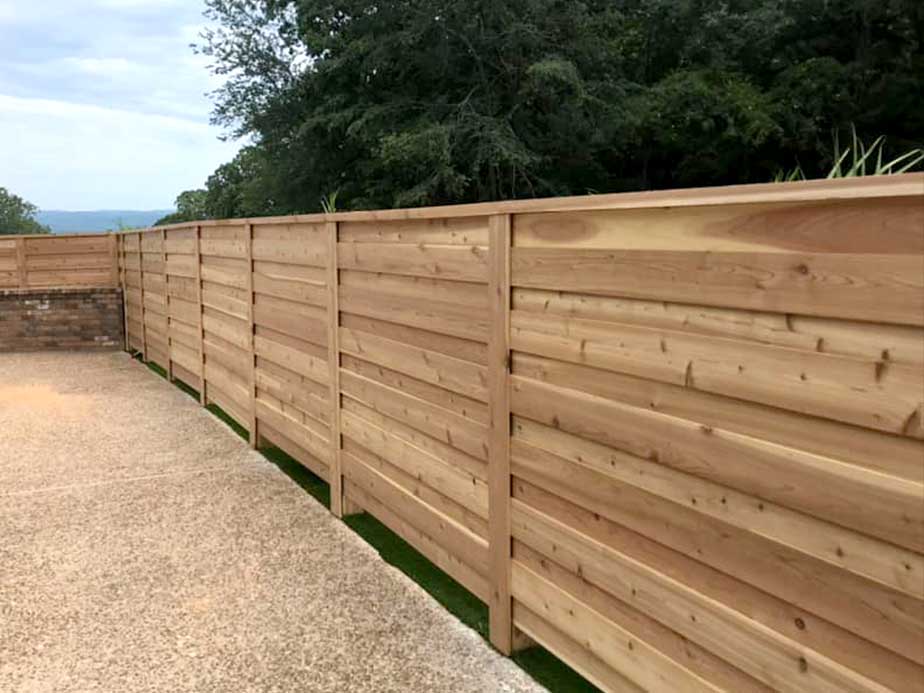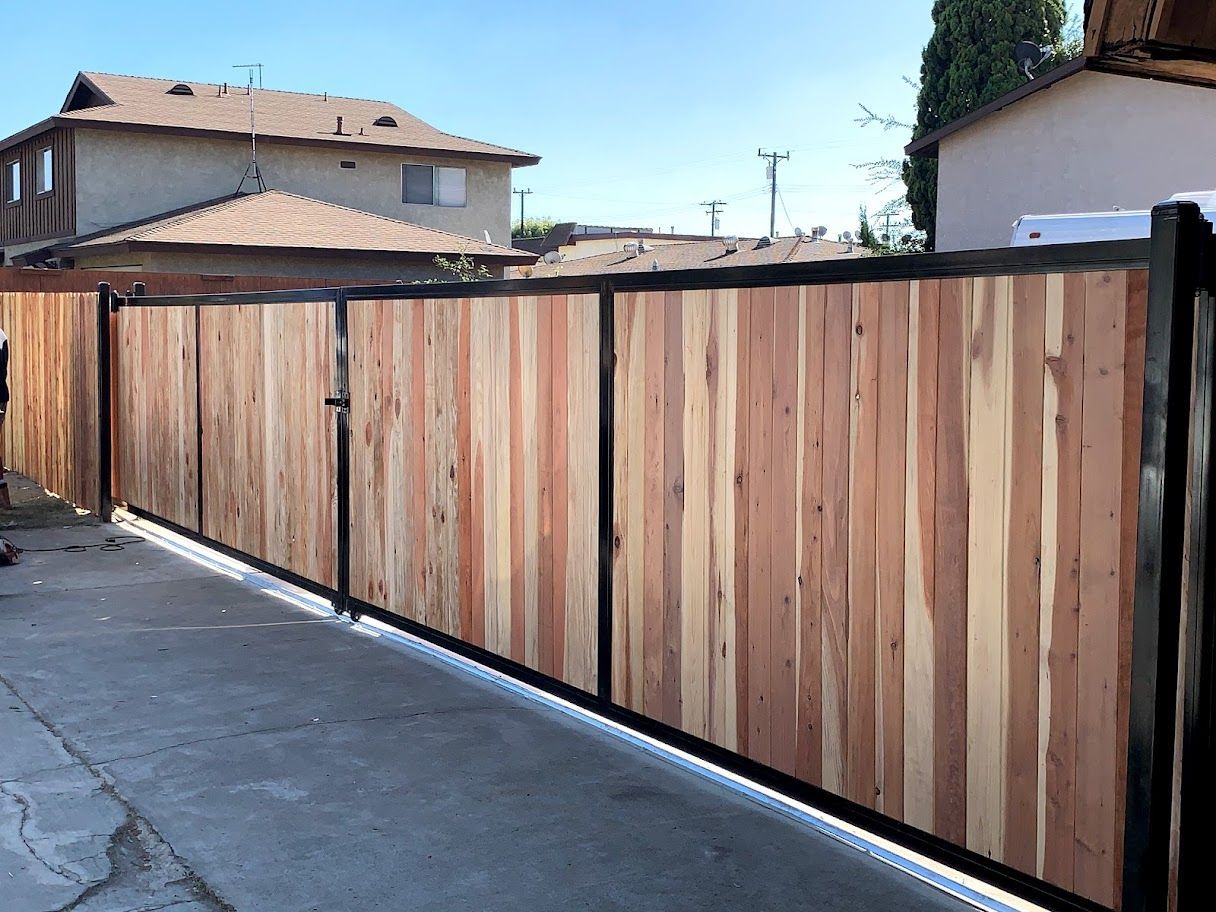All Categories
Featured
Preserving your fence is important to ensure its functionality, look, and durability. Different materials have unique upkeep requirements, influenced by aspects such as environment, exposure to elements, and planned usage. Whether your fence is constructed from timber, plastic, metal, or various other materials, understanding its care needs will certainly aid keep it in ideal condition. Right here's an introduction of exactly how to maintain various types of secure fencing materials effectively.
![]()
Cleansing: Make use of a pressure washer or soapy water with a soft brush to get rid of mildew, dust, and algae. This must be done annually or biannually. Staining and Sealing: Apply a sealant or discolor every 2-- 3 years to stop dampness damages and UV fading. Select a premium product appropriate for exterior usage. Repairs: Change distorted, deteriorated, or split boards asap to prevent further damages. Insect Administration: Treat with a timber preservative to shield against termites and other insects. 2. Vinyl Fencings. Plastic fences are preferred for their low-maintenance nature however still require some upkeep.
Cleansing: Laundry the fence with a blend of water and mild cleaning agent making use of a soft sponge or towel. Stay clear of unpleasant cleansers that may scratch the surface area. Inspections: Inspect for cracks or voids regularly, particularly after tornados. Plastic can come to be brittle in exceptionally winter. Stopping Staining: Remove stains quickly. For hard spots, utilize a vinegar option or a vinyl-safe cleansing representative. 3. Chain-Link Fences. Chain-link fences are long lasting and useful, usually utilized for security and boundary noting.
Corrosion Removal: Evaluate for rust frequently, specifically in damp or seaside locations. Remove corrosion with a cable brush and apply a rust-proof covering. Cleansing: Rinse with water to eliminate dirt and debris. Utilize a scrub brush for areas with heavy build-up. Tightening and Repair Works: Guarantee the messages and links remain limited. Change harmed areas or hardware as required. 4. Wrought Iron Fences. Wrought iron provides an elegant appearance yet calls for regular attention to prevent rust and preserve its surface.
Rust Prevention: Sand off any kind of rust areas and apply a rust-resistant primer and paint. This must be done each year or as needed. Cleaning: Utilize a moderate soap service and a soft cloth or sponge to eliminate dust. Prevent extreme chemicals that might damage the metal. Painting: Reapply paint every couple of years to protect the iron and enhance its appearance. 5. Light weight aluminum Fences. Aluminum fencings are light-weight, corrosion-resistant, and require marginal care.
![]()
Cleansing: Usage soapy water and a towel to clean up the fencing, washing thoroughly to avoid streaks. Examinations: Look for loosened screws or panels occasionally. If necessary, safeguard or change components. Touch-Ups: Usage paint designed for light weight aluminum to cover any chips or scratches, protecting the metal below. 6. Composite Fences. Compound fencing is made from recycled products, incorporating the look of timber with higher toughness.
Cleaning: Wash with water and make use of a mild detergent to get rid of dust and discolorations. Avoid rough devices that could harm the composite surface. Inspections: Try to find indicators of bending or splitting, specifically in locations with severe temperature changes. Form Avoidance: Tidy mold or mold immediately with a blend of water and white vinegar. 7. Bamboo Fences. Bamboo fence is environmentally friendly but a lot more delicate than various other materials.
Cleaning: Use a soft brush with soapy water to tidy dirt and particles. Avoid making use of too much water stress to avoid splitting. Securing: Use a water-resistant sealer every 2-- 3 years to secure against weather condition damage. Repairs: Change fractured or broken bamboo posts as needed to preserve the structure and appearance. General Upkeep Tips. Trim Plants: Keep creeping plants and shrubs far from the fence to stop dampness accumulation and damages. Seasonal Treatment: In winter months, clear snow accumulation from fences to prevent stress and anxiety on the structure. In summer, check for sunlight damage or fading. Regular Assessments: Walk along the fence line regularly to look for loosened hardware, leaning areas, or other indicators of wear. Verdict. No issue the sort of secure fencing material, regular upkeep is the crucial to preserving its feature and visual appeals. Wooden fences demand one of the most upkeep, while vinyl and light weight aluminum need less initiative but still take advantage of regular cleansing and inspections. By resolving small problems early and executing regular care, you'll appreciate a fence that remains strong and eye-catching for several years to come.

- Wood Fences. Wooden fences are timeless however require routine care to secure versus weather condition and parasites.
Cleansing: Make use of a pressure washer or soapy water with a soft brush to get rid of mildew, dust, and algae. This must be done annually or biannually. Staining and Sealing: Apply a sealant or discolor every 2-- 3 years to stop dampness damages and UV fading. Select a premium product appropriate for exterior usage. Repairs: Change distorted, deteriorated, or split boards asap to prevent further damages. Insect Administration: Treat with a timber preservative to shield against termites and other insects. 2. Vinyl Fencings. Plastic fences are preferred for their low-maintenance nature however still require some upkeep.
Cleansing: Laundry the fence with a blend of water and mild cleaning agent making use of a soft sponge or towel. Stay clear of unpleasant cleansers that may scratch the surface area. Inspections: Inspect for cracks or voids regularly, particularly after tornados. Plastic can come to be brittle in exceptionally winter. Stopping Staining: Remove stains quickly. For hard spots, utilize a vinegar option or a vinyl-safe cleansing representative. 3. Chain-Link Fences. Chain-link fences are long lasting and useful, usually utilized for security and boundary noting.
Corrosion Removal: Evaluate for rust frequently, specifically in damp or seaside locations. Remove corrosion with a cable brush and apply a rust-proof covering. Cleansing: Rinse with water to eliminate dirt and debris. Utilize a scrub brush for areas with heavy build-up. Tightening and Repair Works: Guarantee the messages and links remain limited. Change harmed areas or hardware as required. 4. Wrought Iron Fences. Wrought iron provides an elegant appearance yet calls for regular attention to prevent rust and preserve its surface.
Rust Prevention: Sand off any kind of rust areas and apply a rust-resistant primer and paint. This must be done each year or as needed. Cleaning: Utilize a moderate soap service and a soft cloth or sponge to eliminate dust. Prevent extreme chemicals that might damage the metal. Painting: Reapply paint every couple of years to protect the iron and enhance its appearance. 5. Light weight aluminum Fences. Aluminum fencings are light-weight, corrosion-resistant, and require marginal care.

Cleansing: Usage soapy water and a towel to clean up the fencing, washing thoroughly to avoid streaks. Examinations: Look for loosened screws or panels occasionally. If necessary, safeguard or change components. Touch-Ups: Usage paint designed for light weight aluminum to cover any chips or scratches, protecting the metal below. 6. Composite Fences. Compound fencing is made from recycled products, incorporating the look of timber with higher toughness.
Cleaning: Wash with water and make use of a mild detergent to get rid of dust and discolorations. Avoid rough devices that could harm the composite surface. Inspections: Try to find indicators of bending or splitting, specifically in locations with severe temperature changes. Form Avoidance: Tidy mold or mold immediately with a blend of water and white vinegar. 7. Bamboo Fences. Bamboo fence is environmentally friendly but a lot more delicate than various other materials.
Cleaning: Use a soft brush with soapy water to tidy dirt and particles. Avoid making use of too much water stress to avoid splitting. Securing: Use a water-resistant sealer every 2-- 3 years to secure against weather condition damage. Repairs: Change fractured or broken bamboo posts as needed to preserve the structure and appearance. General Upkeep Tips. Trim Plants: Keep creeping plants and shrubs far from the fence to stop dampness accumulation and damages. Seasonal Treatment: In winter months, clear snow accumulation from fences to prevent stress and anxiety on the structure. In summer, check for sunlight damage or fading. Regular Assessments: Walk along the fence line regularly to look for loosened hardware, leaning areas, or other indicators of wear. Verdict. No issue the sort of secure fencing material, regular upkeep is the crucial to preserving its feature and visual appeals. Wooden fences demand one of the most upkeep, while vinyl and light weight aluminum need less initiative but still take advantage of regular cleansing and inspections. By resolving small problems early and executing regular care, you'll appreciate a fence that remains strong and eye-catching for several years to come.
Latest Posts
Discover Exclusive Auto Repair Specials in Chicago at Montclare Auto Repair
Published en
1 min read
Uncover Reduce Expenses on Car Maintenance with Montclare Auto Repair’s Limited-Time Deals
Published en
1 min read
How Regular Vehicle Maintenance at Montclare Auto Repair Saves You Money
Published en
1 min read
More
Latest Posts
Discover Exclusive Auto Repair Specials in Chicago at Montclare Auto Repair
Published May 27, 25
1 min read
Uncover Reduce Expenses on Car Maintenance with Montclare Auto Repair’s Limited-Time Deals
Published May 27, 25
1 min read
How Regular Vehicle Maintenance at Montclare Auto Repair Saves You Money
Published May 26, 25
1 min read